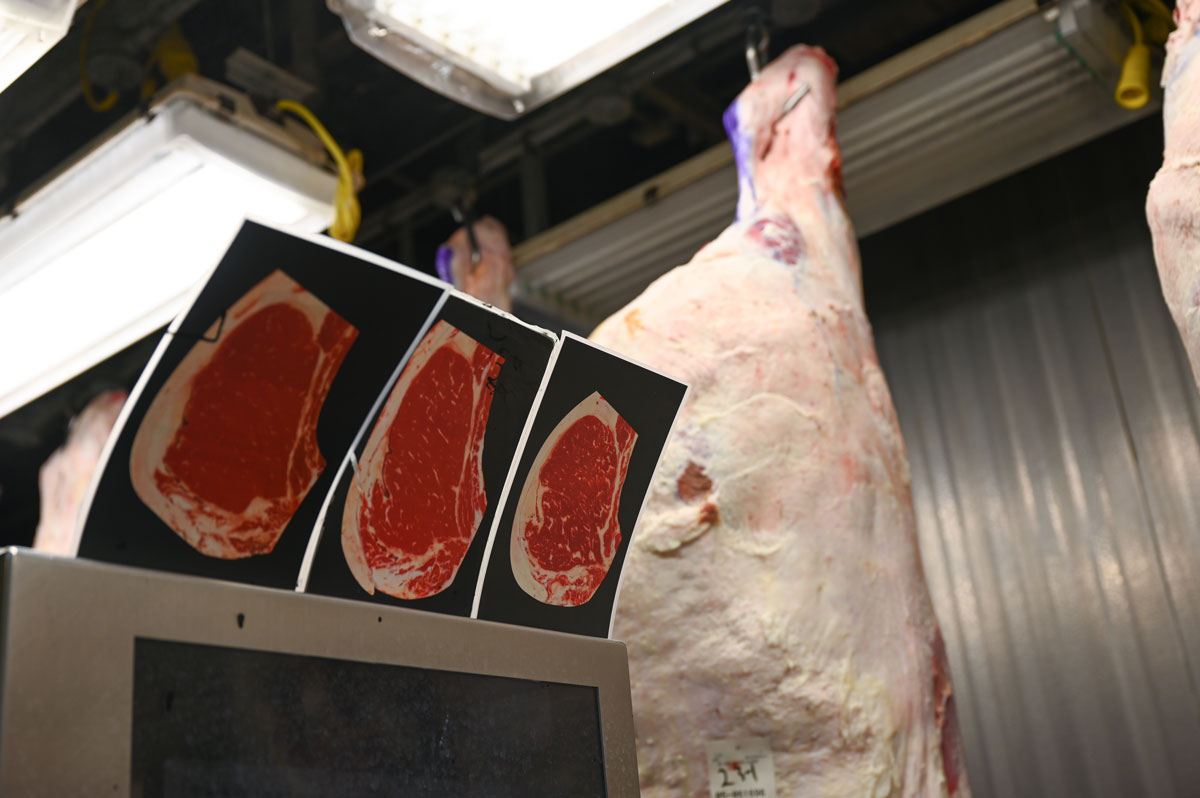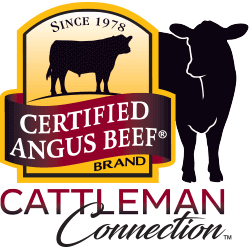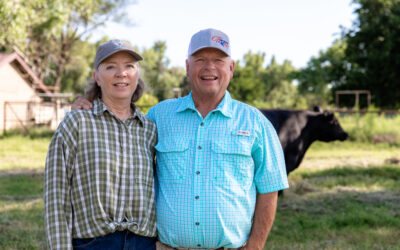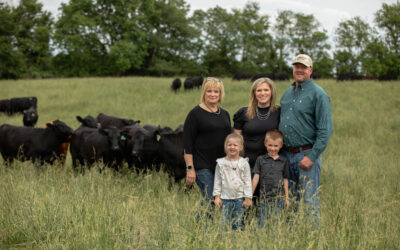
No such thing as “off the grid”
All fed cattle get a report card sooner or later
by Miranda Reiman
July 7, 2021
“Even if you don’t grid your cattle, you grid your cattle.”
That somewhat puzzling statement came from a head cattle buyer to a producer audience years ago. Then he explained how live bids are made every day based off of how those cattle will do in the cooler.
It’s still the way it works today says Paul Dykstra, assistant director of supply management and analysis for the Certified Angus Beef ® (CAB®) brand.
“They are basically looking at them on the grid in their mind,” he notes. “If they’re buying them on a live bid, they’re trying to buy cattle that are worth more than they’re going to pay for them.” It’s part of the “running report card” that buyers are graded on themselves.
The same is true for cattle feeders buying calves. They are also roughly running them through the grid equation in their mind, betting on how those feeder calves will work out as finished animals, Dykstra says.
That’s why it’s helpful for a cow-calf producer—regardless of how they market calves—to have a base understanding of the calculations and what they can do to affect them.
“It’s important to know where the premiums come from and that’s most definitely going to be from Choice, CAB and Prime carcasses, but it’s really important to know that there are significant discounts when we mess up,” he says.
The main ways to do that? Too many heavyweight carcasses (above 1,050 lb. on most grids) and an excessive number of yield grade (YG) 4 and 5 discounts, on grids where YG3 is par.
The goal isn’t to have zero discounts, however.
“You want to maximize quality grade and optimize yield,” Dykstra says.
In a pen of Angus-based cattle, that probably means very few YG1s, but trying to limit YG4s to an acceptable level, he says.

How cattle are fed matters, but much of their potential for grid success is already set before cattle even set hoof in the yard. Cow-calf producers are the designers of the raw material, Dykstra says.
“They have the most control over genetics and that’s probably the factor that, once done right or once done wrong, is very difficult to overcome,” he says. “So we can manage through some scenarios but we imprint the calf with their genetics right from the start and that’s what we’re working with.”
Picking a high marbling breed gives cattlemen a head start.
“I would have no fear putting a lot of Angus cattle on the grid, not even knowing what their genetics are, just because of their breed. You’re already above average,” he says. “Your chances of success in grid marketing are pretty good….unless you’ve selected bulls purposely against marbling.”
Using the CAB Targeting the BrandTM program recommendations gives a base to start from when looking to make improvements, Dykstra says. That means looking for bulls with the Targeting the Brand logo, or that have a marbling (MARB) expected progeny difference (EPD) of +0.65 or above and an Angus Grid Value Index ($G) of +55 or higher.
“To give themselves the most opportunity, they also need to breed some muscle into those cattle,” Dykstra says. “That’s keeping an eye on ribeye within a window of acceptability and keeping some muscle content to help their dressing percentage, but largely to help their yield grade. Not just ribeye area—but also total body muscularity.”
From plant averages to dressing percentage—there are more nuances involved in a grid payout than simply having high-quality cattle, but it really does start there.
“Avoid the pitfalls—that’s the first rule of grid marketing,” Dykstra says. “The second would be to know where your premiums are coming from, and that would be marbling.”
Originally ran in the Angus Beef Bulletin.
You may also like
Legacy in the Golden Land
On a quiet stretch of Northern California rangeland, a different story unfolds. The Borror family’s legacy modestly speaks through the cattle they raise, the ground they steward. The generations who’ve made a life here demonstrate commitment to doing things right, even when no one is watching.
Helping Hands, Helping Herds
“When I die, I want to come back as one of your cows,” murmurs a friend to Steve Zybach. Full to the brim from an alfalfa ration every day, bountiful fields of lovegrass stretched out across the Texas Panhandle—and owners who leave no ounce of cattle care up for question. The Zybachs’ motivation for this level of dedication to their Angus cattle is simply love.
An Ambassador for All
Joanie, with daughter Lindsey and her husband, Adam Hall, raise registered Angus cattle with two primary goals: producing high-quality seedstock that perform well in a wide variety of environments and ensuring end-user satisfaction. Those goals tie everything together, from promoting Angus to other producers to sharing their story with CAB partners and beef consumers.



